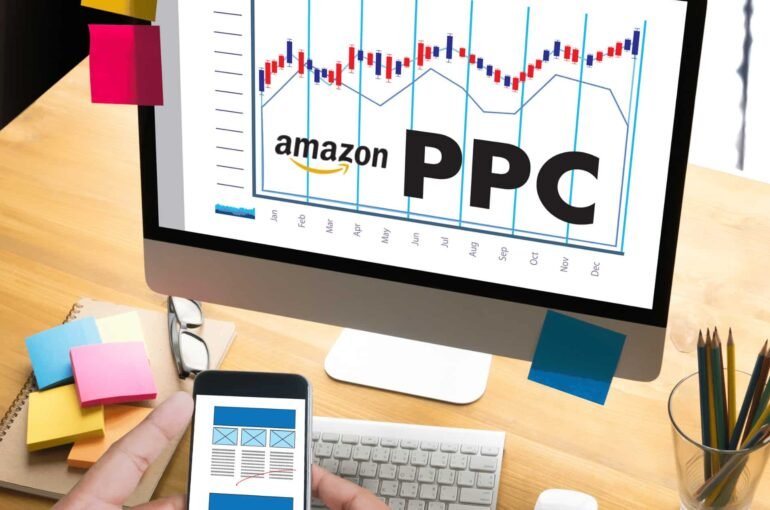Mastering Amazon PPC, A Key to Boosting Your Marketplace Sales
Mastering Amazon PPC, A Key to Boosting Your Marketplace Sales

Amazon PPC (Pay-Per-Click) advertising is one of the most powerful tools sellers have to increase visibility, drive sales, and grow their brand on the world’s largest e-commerce platform. Whether you’re a new seller or an established brand, understanding how to use Amazon PPC effectively can make a huge difference in your marketplace success.
What Is Amazon PPC?
Amazon PPC is an advertising platform that allows sellers to create sponsored ads that appear in search results and on product pages. Instead of paying a fixed fee upfront, you pay only when shoppers click on your ad—hence the name “pay-per-click.” This model makes PPC a cost-effective way to drive targeted traffic to your listings.
There are three main types of Amazon PPC ads:
- Sponsored Products: Ads for individual product listings appearing in search results and product detail pages.
- Sponsored Brands: Ads that showcase your brand and multiple products, often appearing at the top of search results.
- Sponsored Display: Ads targeting shoppers on and off Amazon based on shopping behaviors.
Why Is Amazon PPC Important?
1. Boosts Visibility
Millions of products compete on Amazon every day. PPC ads help your products stand out by placing them in prominent positions where shoppers are more likely to see them. This increased visibility can lead to higher sales and organic ranking improvements.
2. Drives Targeted Traffic
Amazon PPC lets you target specific keywords and customer interests, ensuring that the people clicking your ads are actively searching for products like yours. This targeted traffic tends to convert better, improving your return on ad spend (ROAS).
3. Supports Launch & Growth
New products or brands with limited reviews often struggle to gain traction organically. PPC campaigns can jumpstart sales, generate early reviews, and build momentum to improve organic rankings.
4. Provides Actionable Data
Running PPC ads gives you detailed data on which keywords, ads, and products perform best. This insight is invaluable for optimizing listings, adjusting prices, and refining marketing strategies.
How to Get Started with Amazon PPC
Step 1: Set Clear Goals
Decide what you want from your PPC campaigns—whether it’s brand awareness, launching a new product, clearing inventory, or maximizing profit. Your goals will guide campaign structure and bidding strategy.
Step 2: Choose Campaign Types
- Sponsored Products: Great for direct product sales and keyword targeting.
- Sponsored Brands: Ideal for brand exposure and driving traffic to your Amazon Store.
- Sponsored Display: Useful for retargeting and off-Amazon advertising.
Step 3: Keyword Research
Use Amazon’s own search term reports, third-party tools, and competitor analysis to find relevant keywords. Combine broad, phrase, and exact match types for comprehensive coverage.
Step 4: Structure Campaigns
Organize campaigns by product category, goal, or keyword type. Keep budgets manageable and monitor campaigns frequently to optimize performance.
Step 5: Monitor and Optimize
Check key metrics like ACoS (Advertising Cost of Sale), CTR (Click-Through Rate), and conversion rates. Pause underperforming keywords, increase bids on top performers, and test different ad creatives.
Best Practices for Amazon PPC Success
- Start with Automatic Campaigns: Let Amazon identify converting keywords, then add those to manual campaigns for better control.
- Use Negative Keywords: Prevent wasting spend on irrelevant searches by adding negative keywords regularly.
- Optimize Product Listings: Ensure your titles, images, and descriptions are optimized, as PPC drives traffic that needs to convert.
- Test and Iterate: Continuously test bids, keywords, and ad copy to find the best combinations.
- Leverage Dayparting & Geo-Targeting: Use advanced settings to focus ads on the most profitable times and locations.
- Budget Wisely: Allocate enough budget for meaningful data but avoid overspending on low-performing ads.
Common Mistakes to Avoid
- Ignoring data and letting campaigns run unchecked.
- Targeting irrelevant keywords that drain budget.
- Neglecting listing optimization, leading to poor conversion despite clicks.
- Overbidding on low-margin products, hurting profitability.
Conclusion
Amazon PPC is a must-have strategy for sellers aiming to increase sales and build brand presence on Amazon. By understanding how PPC works, setting clear goals, and continually optimizing campaigns, you can maximize your advertising ROI and accelerate your business growth. Whether you’re launching new products or scaling an existing catalog, mastering Amazon PPC can unlock your marketplace potential.
